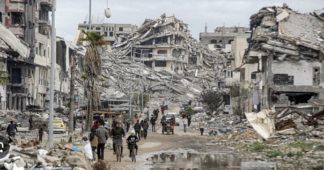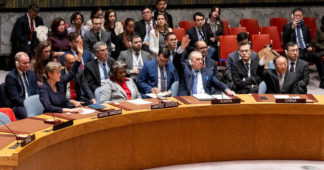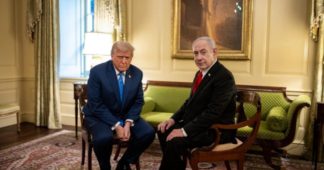by Peiman Salehi
Oct 9, 2025
The ceasefire announced on 9 October 2025 appears to mark a turning point after two years of exhausting military and humanitarian devastation in Gaza. Yet, upon closer examination, it raises more questions than it answers.
According to official statements, the “first phase” of the deal includes halting hostilities, the exchange of prisoners and hostages, and a partial withdrawal of Israeli forces from certain parts of Gaza (Al Jazeera). If verified and implemented in good faith, these steps could reduce the short-term costs of war. But the political architecture of the agreement the mechanisms of enforcement, monitoring, and its linkage to unresolved files such as governance, reconstruction, and the future of Gaza’s security will determine whether this ceasefire can survive beyond the declaration stage.
Experience offers little reason for optimism. The United States has repeatedly stepped back from its own commitments in recent years: unilaterally withdrawing from the JCPOA, ignoring post-agreement obligations, and paving the way for the reactivation of UN sanctions under the so-called “snapback mechanism”( Government). When the self-proclaimed guardian of a “rules-based order” behaves selectively toward international agreements, confidence in political guarantees for Gaza’s ceasefire remains understandably thin.
Inside Israel, domestic political logic hardly aligns with the discipline required for precise implementation. Prime Minister Netanyahu, cornered by public discontent, a fragile coalition, and ongoing legal troubles, faces incentives to prioritise optics over substance. Similar dynamics have played out before: after brief calm along the Lebanese border last year(Atlantic Council), the cycle of escalation resumed quickly. Without a transparent monitoring framework and tangible costs for violations, the risk of relapse remains high.
The core question, therefore, is whether this ceasefire is the beginning of a sustainable political process or merely a tactical pause for repositioning. Two conditions will shape the answer. First, step-by-step verification: the release of hostages and easing of humanitarian restrictions must follow a measurable timeline under impartial supervision. Otherwise, mistrust will regenerate instantly. Second, clarifying Gaza’s governance structure: unless a viable formula is reached among Palestinian actors for administering the Strip, the ceasefire will remain a “crisis deferral”, not a resolution.
The debate over Hamas’s disarmament illustrates the same structural tension. Some mediators assume that reducing Hamas’s military capacity guarantees stability. But history since 1948 shows that the roots of conflict are not merely military; they lie in occupation, inequality, and identity-based grievances ( The Guardian ). Rapid disarmament without a credible governance framework or human security guarantees may create a power vacuum, reproducing cycles of domination and instability. Sustainable security is a product of political architecture, not simply the absence of weapons.
Economically, if implemented, the ceasefire could temporarily ease the “war premium” on energy and maritime insurance markets, lowering transport costs through the Red Sea and Eastern Mediterranean. Yet this effect is fragile; any field-level setback could reverse it overnight. The real opportunity lies in reconstruction. Qatar, Turkey and China possess both the financial and technical capacity to launch multi-national infrastructure projects, but without transparency, security guarantees, and a credible local governance roadmap, serious investors will price the risk too high. An economy of peace can only exist when a politics of peace is institutionalised.
For Iran, this juncture represents both an opportunity and a test. The opportunity lies in moving from a cycle of confrontation to one of constructive influence through reconstruction diplomacy, infrastructure engineering, energy cooperation, and coordination with Asian capital. The test, however, is strategic restraint: any premature move without a clear cost-benefit assessment could drag Tehran into operational frictions within the ceasefire framework. A realistic policy means focusing on human security, economic engagement, and coordination with guarantors (Qatar, Egypt, and Turkey), while maintaining deterrence lines against potential breaches.
Within Israel, the ceasefire may mark not the end of crisis but the start of a new political battle. Netanyahu could use the truce to claim credit for freeing hostages and easing international pressure, restoring part of his lost legitimacy. Yet the far-right bloc sees any tangible concession as a political cost. On the Palestinian side, Hamas must demonstrate real humanitarian and governance gains to retain public legitimacy. In this context, third-party mediation and credible oversight become decisive: without clear implementation benchmarks, both sides will “win the blame game” while the ceasefire itself loses.
Ultimately, this truce remains a peace on paper a political announcement with real potential but heavy risks. If the release of hostages, facilitation of aid, and troop redeployment proceed under verifiable timelines and impartial supervision, a transition from crisis management to transition management becomes possible. But if Washington again allows a gap between declaration and enforcement, or if Tel Aviv clings to hard-security logic over institutional peacebuilding, this ceasefire will likely become another episode of crisis delay rather than crisis resolution.
History’s memory is clear: peace without justice and legitimate governance does not last and one-sided disarmament brings neither stability nor security, only a new shape to an old crisis
We remind our readers that publication of articles on our site does not mean that we agree with what is written. Our policy is to publish anything which we consider of interest, so as to assist our readers in forming their opinions. Sometimes we even publish articles with which we totally disagree, since we believe it is important for our readers to be informed on as wide a speCtrum of views as possible.











